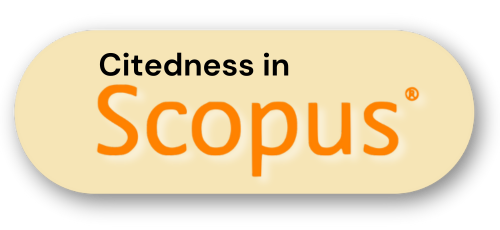Application of the Economic Order Quantity (EOQ) Method in Soybean Raw Material Inventory Control at the Haji Maman Tofu Factory in Matraman District, East Jakarta
DOI:
https://doi.org/10.61194/sijl.v1i2.65Keywords:
Raw Material Inventory Control, Economic Order Quantity (EOQ) MethodAbstract
This research is based on the lack of implementation of a method in controlling the inventory of soybean raw materials at Haji Maman’s Tofu Factory in the Matraman District of East Jakarta. Haji Maman’s Tofu Factory stil relies on daily records and sometimes uses estimates or assumption in its operational activities. In the procurement of raw materials, there is often an excess due to the lack of precise calculations regarding the ordering needs of raw materials, resulting in accumulation in the warehouse. In this study, the researcher utilized the Economic Order Quantity (EOQ) method, which determines the optimal quantity of raw material orders for each purchase, the optimal purchase frequency, and establishes the Re-Order Point. The approach and type of research used is a quantitative research method with a descriptive research approach. The objective of this study is to examine the implementation of the EOQ method in controlling the inventory of soybean raw materials at Haji Maman’s Tofu Factory in the Matraman District of East Jakarta. Data Collection was conducted through observation and interviews with Mr. Haji Maman, the owner. The data analysis technique employed was the EOQ method, taking into account purchase frequency, Re-Order Point, and Total Inventory Cost (TIC). The results of this study indicate that the optimal average frequency of raw material orders is 17 times per year. The total inventory cont using Haji Maman’s Tofu Factory policy amounts to Rp. 9,709,261, while using the EOQ method it amounts to Rp. 7,492,129, resulting in savings of Rp. 2,217,132 for Haji Maman’s Tofu Factory. The Re-Order Point is determined to be 216 kilograms.
References
Abdolazimi, O., Shishebori, D., Goodarzian, F., Ghasemi, P., & Appolloni, A. (2021). Designing a new mathematical model based on ABC analysis for inventory control problem: A real case study. RAIRO - Operations Research, 55(4), 2309–2335. https://doi.org/10.1051/ro/2021104
Li, J., Yi, L., Shi, V., & Chen, X. (2021). Supplier encroachment strategy in the presence of retail strategic inventory: Centralization or decentralization? Omega (United Kingdom), 98. https://doi.org/10.1016/j.omega.2020.102213
Mardiyati, U., Abrar, M., & Ahmad, G. N. (2015). The influence of investment decisions, funding decisions, company size and profitability on firm value in the consumer goods manufacturing sector listed on the Indonesian stock exchange for the period 2010-2013.JRMSI-Indonesian. Science Management Research Journal, 6(1), 417–439.
Milewski, D. (2020). Total costs of centralized and decentralized inventory strategies—including external costs. Sustainability (Switzerland), 12(22), 1–16. https://doi.org/10.3390/su12229346
Moon, I., Dey, K., & Saha, S. (2018). Strategic inventory: Manufacturer vs. retailer investment. Transportation Research Part E: Logistics and Transportation Review, 109, 63–82. https://doi.org/10.1016/j.tre.2017.10.005
Nurohman, M., Kasim, M. Y., & Fattah, V. (2016). Influence Policy Dividend , Profitability dna Growth Company Assets to Company Value in the Industry Manufacturing on the Indonesia Stock Exchange. Journal Knowledge Tadulako University Management, 2(3), 281–292. https://doi.org/10.22487/jimut.v2i3.65
Sabrin, B. S. D. T. S. S. (2016). The Effect of Profitability on Firm Value in Manufacturing Company at Indonesia Stock Exchange. The International Journal Of Engineering And Science, 5(10), 81–89.
Septiana, R. A., & DP, E. N. (2012). The Effect of Implementation of Corporate Social Responsibility on Company Profitability (Studies of Manufacturing Companies Listed on the IDX 2007 to 2009. PEKBIS (Journal of Economics and Business Education, 4(02). https://doi.org/https://www.sciencedirect.com/science/article/abs/pii/S1447677018302614
Shabani, A., Maroti, G., de Leeuw, S., & Dullaert, W. (2021). Inventory record inaccuracy and store-level performance. International Journal of Production Economics, 235. https://doi.org/10.1016/j.ijpe.2021.108111
Sugiyono. (2019). Metode Penelitian Kuantitatif, Kualitatif, dan R&D. Alphabet.
Taufiqurrahman, M. (2022). Huawei pivots to Asia Pacific with greater investment in talent, cloud technology. https://www.thejakartapost.com/business/2022/05/22/huawei-pivots-to-asia-pacific-with-greater-investment-in-talent-cloud-technology.html
Tiezzi, S. (2014). China urges companies to ‘Go global. https://thediplomat.com/2014/12/china-urges-companies-to-go-global/
Toft, M. N. J., Adeyeye, Y., & Lund, J. F. (2015). The use and usefulness of inventory-based management planning to forest management: Evidence from community forestry in Nepal. Forest Policy and Economics, 60, 35–49. https://doi.org/10.1016/j.forpol.2015.06.007
Tuncel, O., Taneri, N., & Hasija, S. (2022). Why Are Minimum Order Quantity Contracts Popular in Practice? A Behavioral Investigation. Manufacturing and Service Operations Management, 24(4), 2166–2182. https://doi.org/10.1287/msom.2021.1061
Zhou, L., & Leung, D. (2015). China’s overseas investments, explained in 10 graphics. https://www.wri.org/insights/chinas-overseas-investments-explained-10-graphics#:~:text=China%20Goes%20Global%3A%20Bank%20Lending&text=These%20banks%20increasingly%20support%20Chinese,their%20funding%20from%20Chinese%20banks
Fahmi, S. (2015). Nanda, "Control of Raw Material Inventory Using the EOQ Method at UD. Adi Mabel. Journal of Technology, Medan, 1-11.
Gitosudarmo, Indriyo. (2002). Operation management. 2nd Edition. BPFE. Yogyakarta.
Heizer, J. & Render, B. 2015. Operations Management: Continuity and Supply Chain Management. 11 editors. South Jakarta: Salemba Empat.
Rifqi, Latif Hanafi. 2012. Cost Efficiency of Raw Material Control Using the Economic Order Quantity (EOQ) Method at PT. Sari Warna Asli V Kudus. Thesis. Semarang: Faculty of Economics UNNES.
Sugiyono. 2011. Quantitative, Qualitative and Combination Research Methods (Mixed Methods). Alphabet. Bandung.
Sugiyono, D. 2013. Quantitative, qualitative, and combination research methods (Mixed methods). Bandung: CV. Alphabet.
Sugiyono. 2015. Management Research Methods. Bandung: CV. Alphabet.
Sugiyono. (2017). Quantitative Research Methods, Qualitative, and R&D. Bandung: Alfabeta, CV.
Sugiyono. 2018. Evaluation Research Methods (quantitative, qualitative, and combination approaches). Bandung: ALPHABETA, CV
Downloads
Published
How to Cite
Issue
Section
License
Copyright (c) 2023 Achmad Rizal Al Firdausi, Degdo Suprayitno

This work is licensed under a Creative Commons Attribution 4.0 International License.





